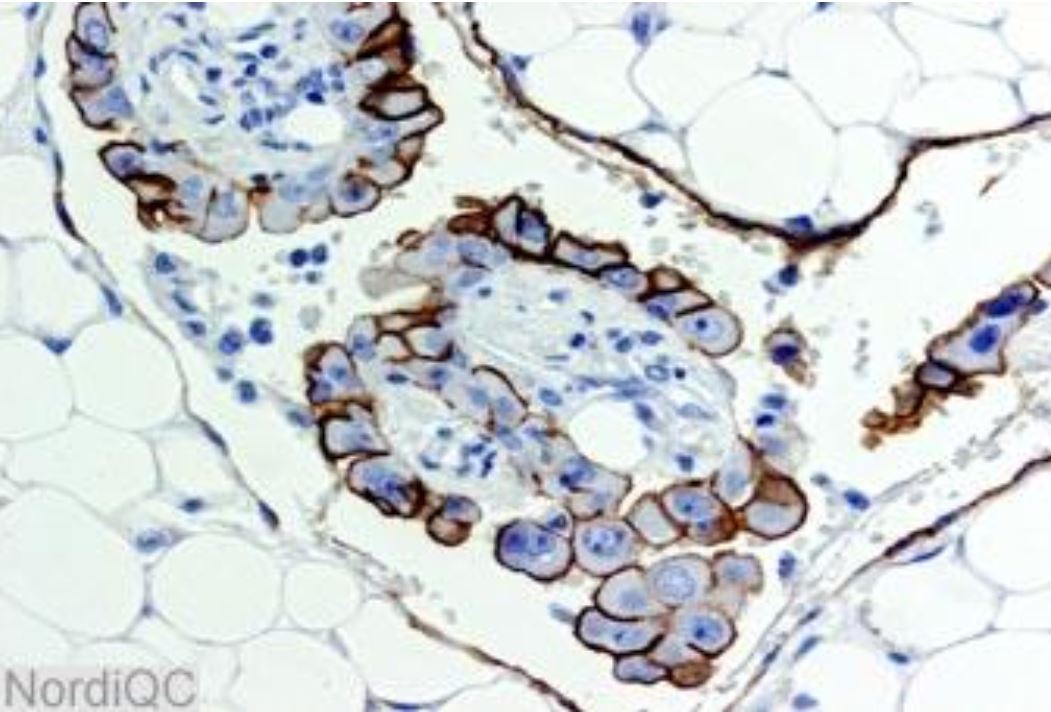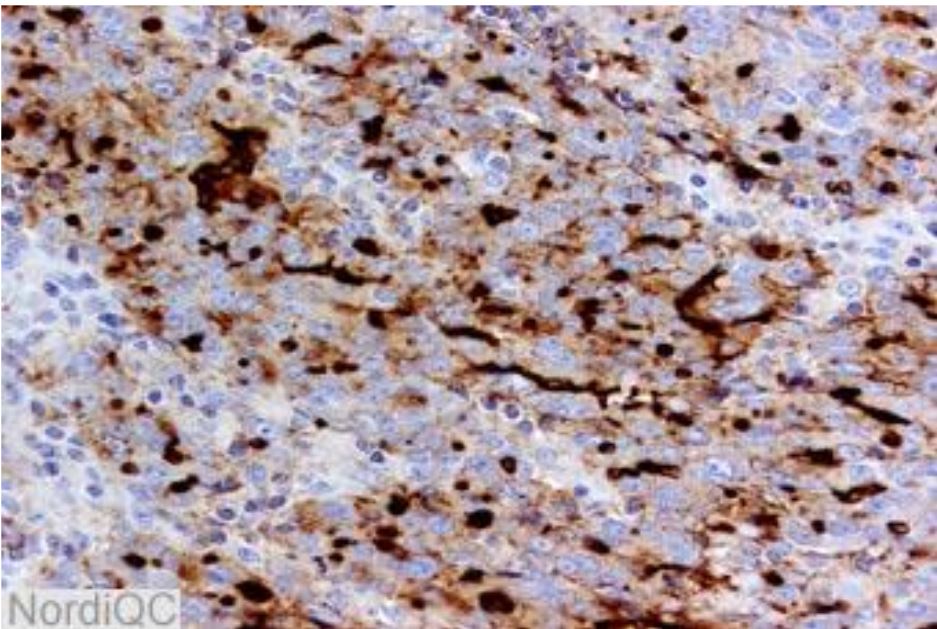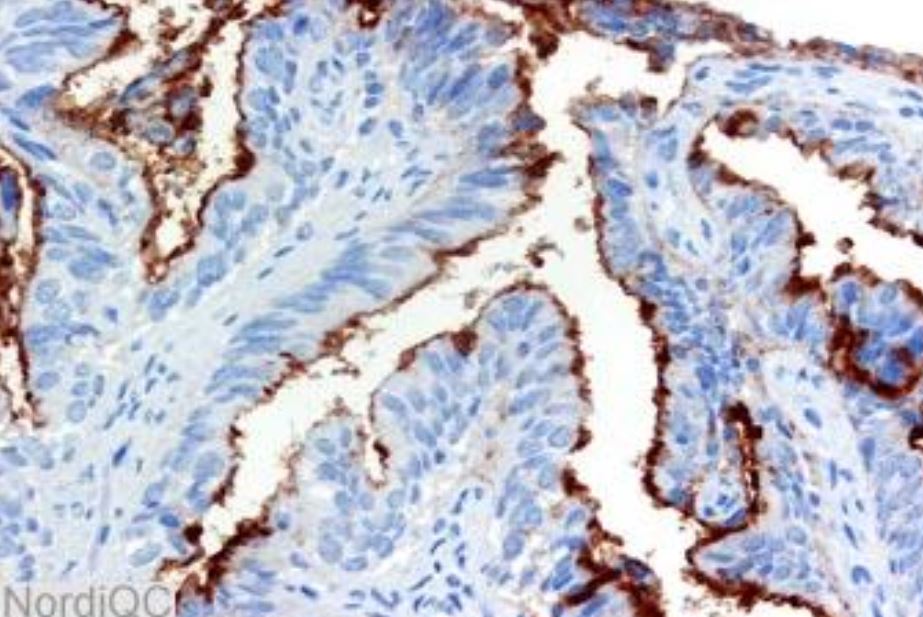Table of Contents
Definition / general | Terminology | Pathophysiology | Clinical features | Interpretation | Uses by pathologists | Microscopic (histologic) images | Positive staining - normal | Positive staining - disease | Negative stainingCite this page: Pernick N. CA125. PathologyOutlines.com website. https://www.pathologyoutlines.com/topic/stainsca125.html. Accessed April 2nd, 2025.
Definition / general
- Cancer antigen 125 (CA-125) is a protein encoded by MUC16 gene, used as a tumor marker, because it is 79% sensitive for ovarian cancer
- Not specific, because elevated in other tumors and in inflammatory conditions
Terminology
- Also known as MUC16
Pathophysiology
- High molecular weight membrane associated mucin found in cornea and conjunctiva, in respiratory tract and female reproductive tract epithelium
- As a mucin, forms lubricating barrier against foreign particles and infectious agents
Clinical features
- Elevated in carcinomas of breast, cervix (Asian Pac J Cancer Prev 2010;11:1745), endometrium, fallopian tubes, GI, lung, ovary; also endometriosis, pregnancy, inflammatory disorders
Interpretation
- Strong membranous staining, fallopian tube is good control
Uses by pathologists
- (1) For ovarian carcinomas, use serum levels to follow response to treatment and predict prognosis (Ann Oncol 2008;19:327)
- (2) In UK, recommended to use serum levels to screen women with symptoms of ovarian cancer (National Health Service Press Release)
- (3) Serial measurements may be more specific for ovarian cancer
- (4) Useful in immunohistochemistry to confirm ovarian origin of tumor (Am J Surg Pathol 2005;29:1482)
- (5) Serum levels may have role in assessing heart failure (Clin Cardiol 2011;34:244, Eur Heart J 2010;31:1752)
- High serum CA-125 levels are due to serosal fluids and serosal involvement of various diseases of ovarian or non-ovarian origin (Gynecol Oncol 2002;85:108)
- Serum levels not recommended for general low-risk ovarian cancer screening due to lack of sensitivity, particularly for low stage tumors (only 50% sensitive for stage I)
Microscopic (histologic) images
Positive staining - normal
- Fetus: amnion, coelomic and Müllerian epithelium (Asia Oceania J Obstet Gynaecol 1990;16:379)
- Adults: mesothelial cells and luminal surface of epithelial cells of endocervix, endometrium, fallopian tube; also in small amounts in epithelium of apocrine sweat glands, biliary tract, colon, mammary gland, pancreas, stomach
Positive staining - disease
- Carcinomas of biliary tree, breast, cervix, endometrium, fallopian tubes, liver, lung, ovary (serous, usually not mucinous), pancreas; ovarian sex cord tumors
- Alveolar rhabdomyosarcoma of uterus, desmoplastic small round cell tumor of pelvic peritoneum, epithelioid sarcoma (Arch Pathol Lab Med 2006;130:871, Jpn J Clin Oncol 2004;34:149), intralobar pulmonary sequestration (Intern Med 2002;41:875), leiomyoma of ileal mesentery, mesothelioma, seminal vessel adenocarcinoma
- Endometriosis (Hum Pathol 2008;39:954), inflammatory disorderes, leiomyomas of ileal mesentery, pregnancy
Negative staining
- Normal ovary, squamous cells







